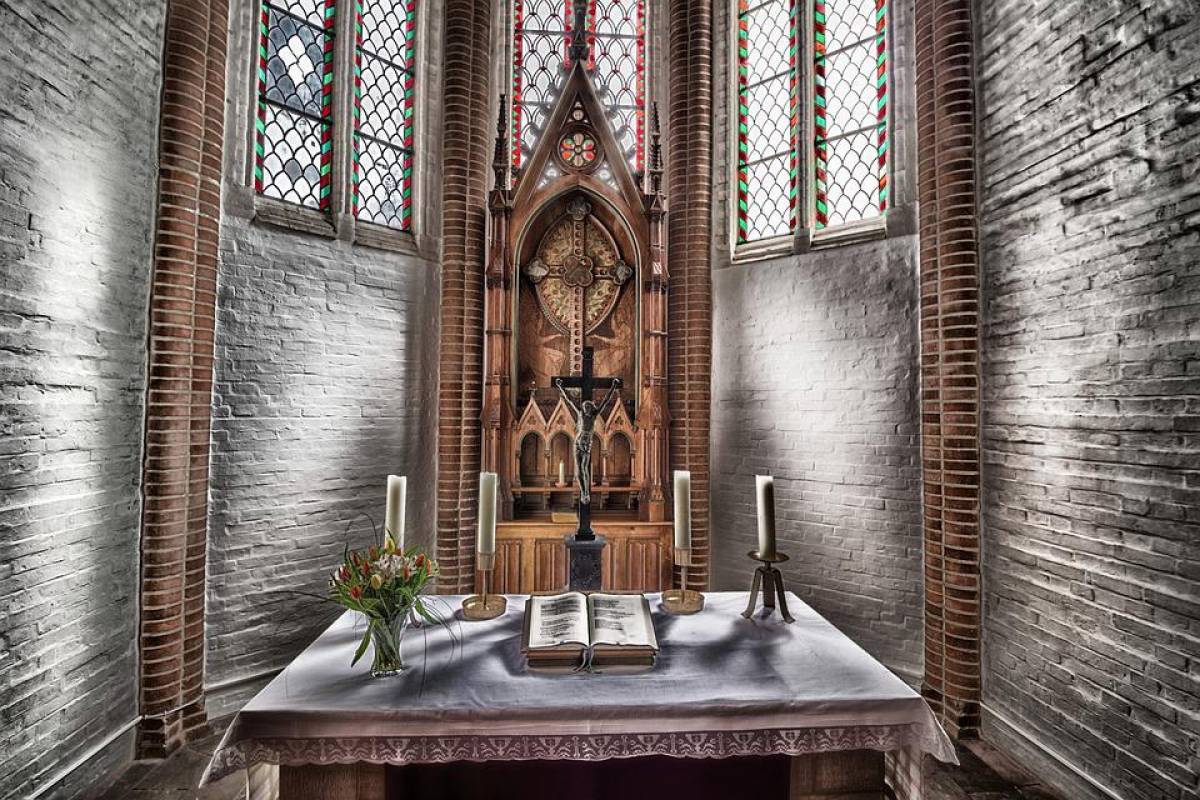
09-06-2022
Culture
The altar: origins of this liturgical furniture
The altar has always been central in liturgical celebrations. Since the earliest Christian rites, the sacrifice of Christ has been continuously re-presented on the altar.
Whether made of stone, walnut wood, ash wood, oak or any other kind of material, the altar is certainly one of the liturgical furnitures that visitors notice as soon as they go into a church. Unlike the tabernacle, the ambo or the baptismal font, the altar has always held a certain importance not only in the Catholic religion, but also in many different other religions. From the earliest times, this sacred table was reserved for sacrifices and the celebration of religious rites such as masses. In the Christian religion, in fact, the altar has maintained a considerable importance, so much so that it is central in religious buildings.
However, like many words, the term altar comes from the Latin “ara”, which in turn derives from the verb “arere” (to burn). For this reason, the altar was originally made of stone, a fire-resistant material that, in the Christian religion, symbolises the Holy Spirit descending from heaven. Despite that, this Christian table is actually the outcome of Jewish and pagan altars, where however the Christian altar is interpreted more as holocausts altar, a table where the Lamb of God is immolated, in reference to Christ's Last Supper and His subsequent sacrifice.
In ancient times, the altar had a square shape (e.g. Ravenna, St. Apollinaris, 6th Century) and this was mainly due to the fact that "[...] the four parts of the world have been nourished and will always be nourished by it; high and turned towards heaven, because its mystery is high and heavenly and it transcends the earth" (Simeon of Thessalonica). Last but not least is the presence of many different liturgical supplies: an altar linen, a cross, symbolising Christ's sacrifice, His death and His resurrection, but also candles symbolising Jesus' presence. However, their arrangement on the altar has never been casual. In fact, to make the liturgical celebration easier for the priest, the cross must be central, between the two altar candles. (Gli altari nella vigente legislazione canonica)
However, like many words, the term altar comes from the Latin “ara”, which in turn derives from the verb “arere” (to burn). For this reason, the altar was originally made of stone, a fire-resistant material that, in the Christian religion, symbolises the Holy Spirit descending from heaven. Despite that, this Christian table is actually the outcome of Jewish and pagan altars, where however the Christian altar is interpreted more as holocausts altar, a table where the Lamb of God is immolated, in reference to Christ's Last Supper and His subsequent sacrifice.
In ancient times, the altar had a square shape (e.g. Ravenna, St. Apollinaris, 6th Century) and this was mainly due to the fact that "[...] the four parts of the world have been nourished and will always be nourished by it; high and turned towards heaven, because its mystery is high and heavenly and it transcends the earth" (Simeon of Thessalonica). Last but not least is the presence of many different liturgical supplies: an altar linen, a cross, symbolising Christ's sacrifice, His death and His resurrection, but also candles symbolising Jesus' presence. However, their arrangement on the altar has never been casual. In fact, to make the liturgical celebration easier for the priest, the cross must be central, between the two altar candles. (Gli altari nella vigente legislazione canonica)
